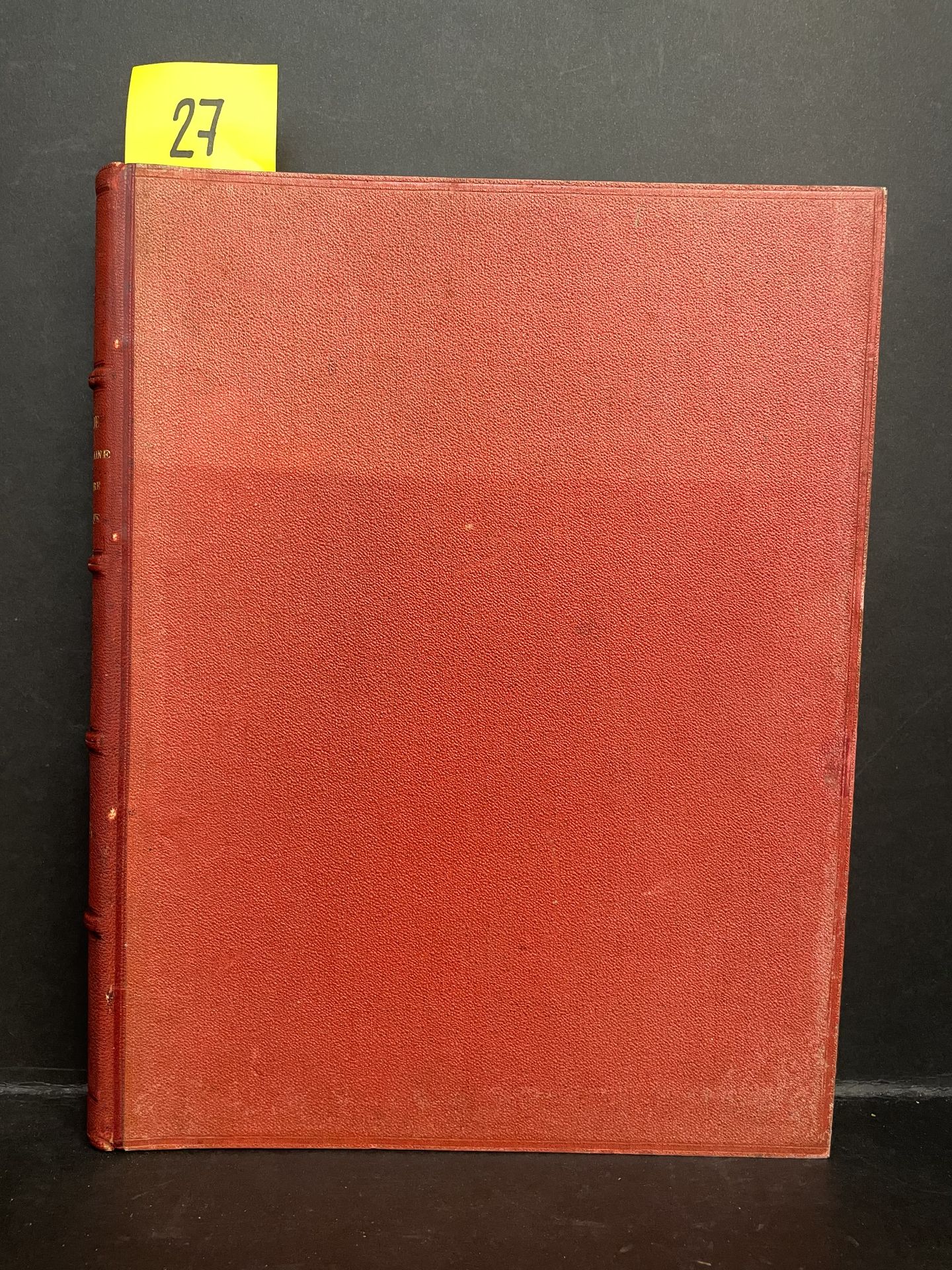Description
Contemporary, literary and artistic gallery. Weekly review. Paris, Ludovic Baschet, 1876 and 1877, 4 vol. in-folio, publisher's binding in red half-chagrin with corners (defects to the bindings, traces of rubbing, missing). Good general condition inside (some marginal browning), no damaged photos which is rare. 49 portraits out of 52 (missing in the 2nd half of the 2nd year the portraits of Juliette Lamber, Octave Feuillet and Louis Figuier), photographs pasted on cardboard drawn in photoglyptie by Gloupil, Nadar (Edmond de Goncourt, Thiers, Sand, Coppée), Carjat (Zola, Lesseps, Hugo, Gambetta, Claretie), Petit (Erckmann-Chatrian) etc. With large format photographs of works of art, small photographs of portraits and works of art pasted on, facsimiles of the writing, presentation texts by Camille Pelletan, Flor O'Square, etc. Head of the collection, the first two years of this publication which appears until 1884. Attached is a vol. dated on the back of 1885 including, without title, without table including 13 portraits: Pierre Dupont, Baudry, Dufaure, de Marcere, Puvis de Chavannes, Chanzy, Mme de Ségur, Émile Lévy, Spuler, Bonnassieux, Arsène Houssaye, Jean-François Millet, Marc de Montifaud. Most of the large pictures are by Carjat. The one of Marc de Montifaud, whose real name was Marie-Amélie Chartroule de Montifaud, wife of Quivogne de Luna (1845-1912), a French freethinking writer, is by Nadar, with an identical binding. Photoglyptic is an opto-mechanical process of reproduction and printing of photographic images invented by the British Walter Bentley Woodbury in 1864. It is an unalterable photomechanical printing process intended to replace silver prints and allowing the distribution in large numbers at lower costs. For thirty years, this process was a huge success because it was practically impossible to distinguish the photoglyphic print from the original photograph. This publication was spread over nine years and was bound as it went along or in its entirety at the end of each issue. This led to numerous variations in the known copies.
27
Contemporary, literary and artistic gallery. Weekly review. Paris, Ludovic Baschet, 1876 and 1877, 4 vol. in-folio, publisher's binding in red half-chagrin with corners (defects to the bindings, traces of rubbing, missing). Good general condition inside (some marginal browning), no damaged photos which is rare. 49 portraits out of 52 (missing in the 2nd half of the 2nd year the portraits of Juliette Lamber, Octave Feuillet and Louis Figuier), photographs pasted on cardboard drawn in photoglyptie by Gloupil, Nadar (Edmond de Goncourt, Thiers, Sand, Coppée), Carjat (Zola, Lesseps, Hugo, Gambetta, Claretie), Petit (Erckmann-Chatrian) etc. With large format photographs of works of art, small photographs of portraits and works of art pasted on, facsimiles of the writing, presentation texts by Camille Pelletan, Flor O'Square, etc. Head of the collection, the first two years of this publication which appears until 1884. Attached is a vol. dated on the back of 1885 including, without title, without table including 13 portraits: Pierre Dupont, Baudry, Dufaure, de Marcere, Puvis de Chavannes, Chanzy, Mme de Ségur, Émile Lévy, Spuler, Bonnassieux, Arsène Houssaye, Jean-François Millet, Marc de Montifaud. Most of the large pictures are by Carjat. The one of Marc de Montifaud, whose real name was Marie-Amélie Chartroule de Montifaud, wife of Quivogne de Luna (1845-1912), a French freethinking writer, is by Nadar, with an identical binding. Photoglyptic is an opto-mechanical process of reproduction and printing of photographic images invented by the British Walter Bentley Woodbury in 1864. It is an unalterable photomechanical printing process intended to replace silver prints and allowing the distribution in large numbers at lower costs. For thirty years, this process was a huge success because it was practically impossible to distinguish the photoglyphic print from the original photograph. This publication was spread over nine years and was bound as it went along or in its entirety at the end of each issue. This led to numerous variations in the known copies.
